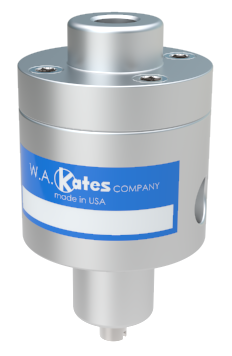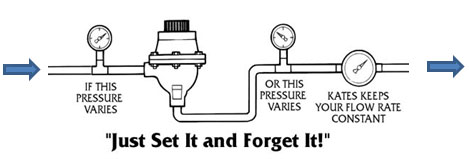Mini-Flo Automatic Flow Rate Controller

Specifications
| 316 SS & Brass | Zytel (Nylon) | |
| Accuracy: | ± 5% flow setting | ± 5% flow setting |
| Repeatability: | ± 10% of set flow | ± 10% of set flow |
| Connections: | 1/4" NPT Female | 7/16-20 S.A.E. Male |
| Working Pressure: | 450 psi max. | 300 psi max. |
| Differential Pressure: | 10-450 psi | 10-300 psi max. |
| Maximum Temperature: | 212° F | 212° F |
| Flow Range: | .05 to 1 | .05 to 1 |
Materials of Construction
Body Material:
316 Stainless Steel, Brass, Zytel (Nylon)
Internals:
316 Stainless Steel, 304 Stainless Steel
Seals
Buna, Viton
(Contact factory for other materials.)
Typical Applications
Deionized Water-Rotating Seals-Additives/Blending-Nitrogen Blanketing-Natural Gas-Bleaching Systems-Reverse Osmosis-Dynamometers-Ratio Blending-Humidity Control-Polymer Injection-Heat Exchangers-Cooling Water-Dust Suppression-Aircraft Deicing-Test Cells-Caustics-Acids-Instrument Purge-Analytical Fast Loops...and hundreds more!
How It Works
The Kates Mini-Flow regulator maintains flow at the set rate, regardless of the variations in either supply or discharge pressure, by holding a constant pressure drop across the metering orifice.
Since the regulator always maintains the same pressure drop across the orifice, the flow rate is determined by the size of the fixed orifice and the differential pressure setting.
A constant pressure drop across the orifice is maintained by a piston-valve. The valve port opening is regulated by the relative positioning of the piston-valve. The piston-valve moves up or down as inlet or outlet pressure fluctuates.
The piston-valve is loaded downward by the pressure at the regulator inlet, which is also the pressure upstream of the metering orifice. It is loaded upward by the pressure of the downstream side of the orifice plus a spring whose force is equal to the orifice pressure drop.
Therefore, the piston-valve will be in balance only when the pressure drop across the metering orifice is at the set value. Any variation in this pressure drop will cause instant corrective action; the imbalance on the piston-valve will change the valve port opening, as required.The orifice pressure drop is immediately restored to its correct value and the flow is maintained at the set rate.



